Radware recently commissioned Enterprise Strategy Group (ESG) to conduct an extensive research project examining application delivery controller (ADC) trends and roles as well as the future strategies of today’s leading enterprises.
Two hundred and forty-three IT professionals working at enterprise organizations (i.e. >1,000 employees and >$500M in annual revenue) have been interviewed and the results are in. Research of this scope is relevant for many reasons, but I found it especially valuable because some findings were surprising, while others, strengthened trends that were already known. It’s important to note that our survey respondents came from various industries and were based in North America and a whopping 85% stated that they make or approve purchase decisions.
Here are some of the report highlights:
Security is an Integral Part of the ADC
An interesting finding was that ADCs are becoming a critical component of a defense-in-depth security strategy as enterprises fine tune security policy and enforcement to align with their sensitive business applications. When asked about what the common challenges in ensuring application service levels, the top challenge mentioned was security problems (39%). This response preceded deployment, application compatibility and performance problems.
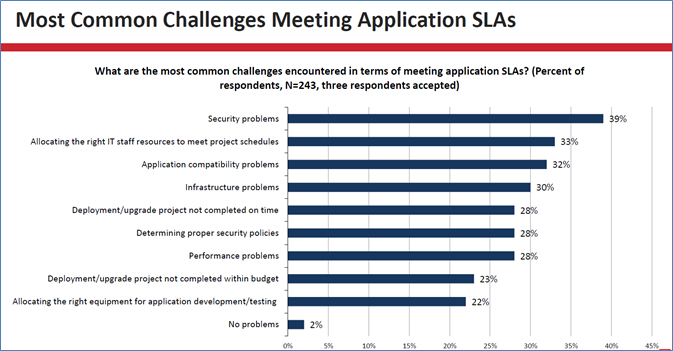
How is the ADC being leveraged when it comes to security services? Well, in various and different fashions, and in any case – extensively.
- For network-level security tasks (including firewalling/IPS/Dos mitigation/network segmentation/etc.)
- To provide web application firewall (WAF) capabilities that can protect their business applications on the application level
- To utilize single-sign on(SSO)/authentication gateway capabilities which helps to simplify a user’s experience when they access multiple secured applications
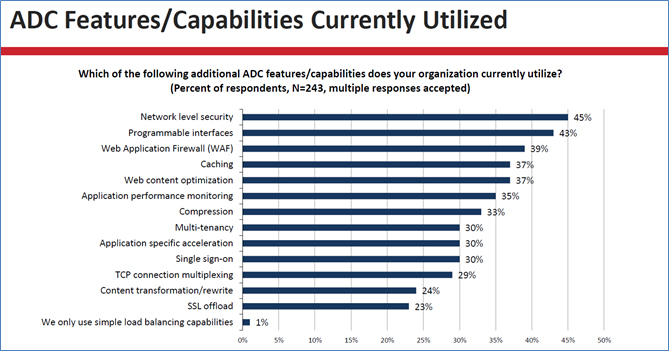
In addition, organizations would like to have security mitigation capabilities both in the network perimeter AND on the ADC. In fact, 58% of organizations believe it is extremely likely or somewhat likely that a malicious attack could penetrate the network perimeter leaving the ADC as a last line of defense.
In the following chart you can see how key security services are currently deployed, where the ADC acts as a last-resort in protecting critical infrastructure which is prone to attacks that passed the network perimeter:
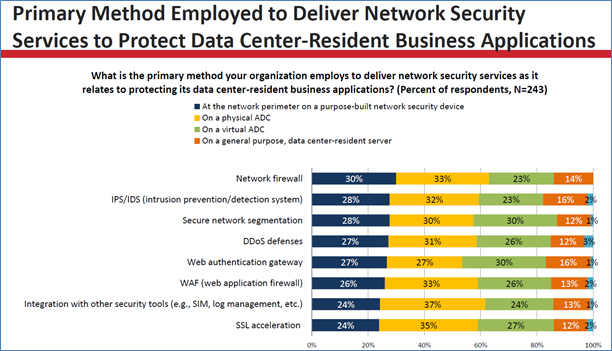
ADCs are Evolving and are Now a Must-Have
ADCs have become a mandatory component of enterprise network. All of the surveyed enterprises deploy one or more ADCs and more than half of them deploy 21 or more devices. When asked about future deployment, 82% of organizations believe that the number of ADCs will increase at their organizations over the next 3 years.
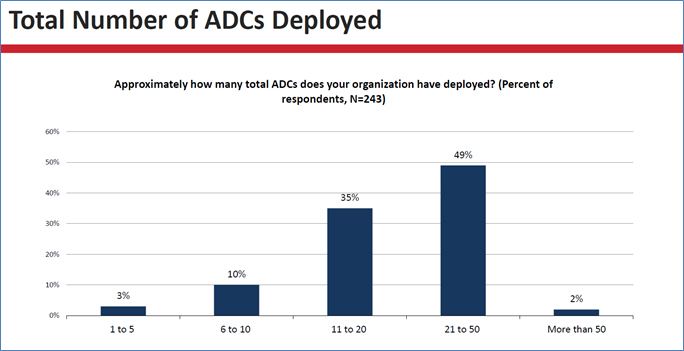
ADCs have evolved well beyond the historical perception of hardware-based load balancers and that is an interesting trend. In fact, two-thirds of today’s ADCs are deployed as both physical and virtual appliances
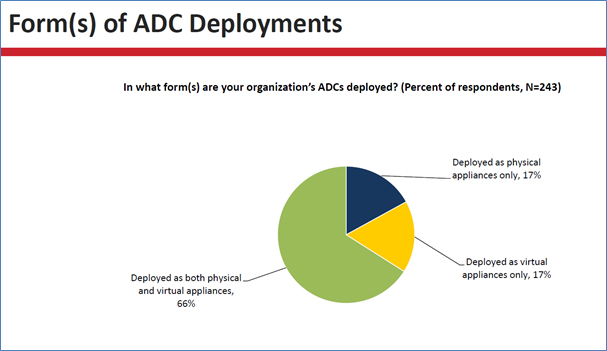
Programmability and Automation are Key
Another interesting finding was the need for IT infrastructure automation, which includes network operations automation. Here, 90% (!) of the respondents commented that their organization has a strategic initiative of automating the network operations processes – which essentially includes ADCs. With ecosystems such as Cisco ACI, VMware NSX and OpenStack – this is clearly a strategic move towards being part of a next-generation, automated and programmable data center.
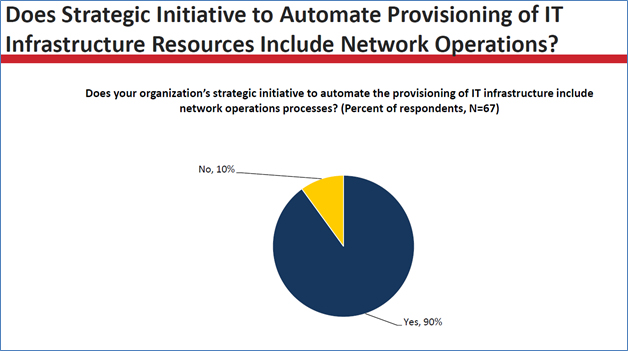
In addition, 43% of the respondents said that they employ programmable interfaces on their ADCs, which is part of their DevOps tasks to align application requirements with ADC capabilities for performance tuning, application monitoring, and security.
Multi-Tenancy is Here to Stay
The vast majority of applications that are supported by ADCs run in multi-tier environments. This doesn’t necessarily mean that all of these applications run on top of multi-tenant ADCs, but still, there are challenges in deploying ADCs to support multi-tenant applications. The top challenges? Configuration issues (35%), operational complexity (30%), performance issues due to shared tenant environments (29%) and the ability to scale (28%).
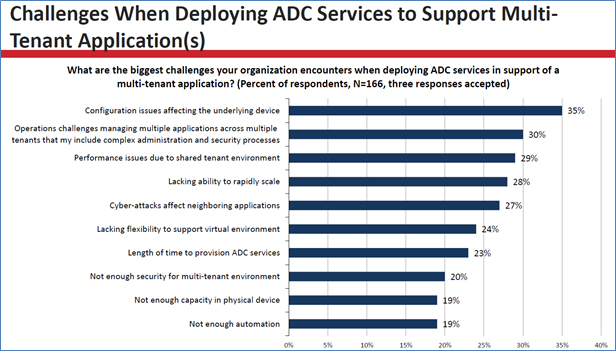
When it comes to ADCs, perception is not reality. From this research a different reality has been presented – that most organizations use ADC functionality well beyond load balancing alone. The role of ADCs is expanding and this is especially true with regard to information security. The data suggests that enterprises can be creative with their ADC deployments for performance tuning, application-specific services, and critical system protection. Read the full report here.